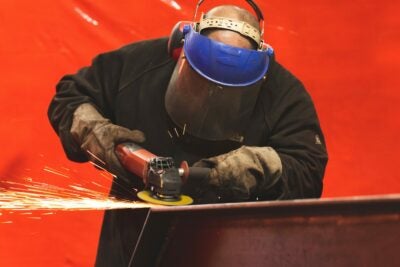
As a manufacturer in today’s competitive market, you have many different manufacturing strategies from which to choose. Examples include traditional mass production, batch process production, make-to-stock (MTS), and make-to-order (MTO).
In MTO manufacturing, an item is not produced until a customer has placed an order for it, and there are multiple variants of MTO, including assemble-to-order (ATO), engineer-to-order (ETO), configure-to-order (CTO), and job shop production.
In this guide, we’ll be discussing configure-to-order (CTO)—covering its flexible, customer-centric production process and exploring why it may be an effective strategy for your manufacturing business.
What is Configure-to-Order (CTO)?
Traditional manufacturing transforms raw materials into finished, identical products. Its superpower is its ability to mass-produce quality products using predefined production standards, materials, tools, machines, and operations. In addition to reducing operational costs, traditional manufacturing allows manufacturers to scale their output.
In comparison, CTO extends some of the benefits of traditional manufacturing to customers—empowering them to customize products to their specific needs or desires. Its flexibility and customization capabilities are attractive to today’s customers, whose expectations and demands continue to rise in tandem with ongoing technological advancements.
What Makes CTO Different from Other Production Methods?
What is the difference between CTO and its parent method MTO? And how does CTO differ from its sibling variants in the MTO category—ATO, ETO, and job shop production?
In pure MTO manufacturing, a preconfigured product is placed into production after an order for that item has been received. It’s a “what you see is what you get” process in which the customer does not weigh in on product specifications.
Similarly, in ATO, the manufacturer stocks up on the parts necessary to produce its preconfigured products, and, when an order is placed, those parts are assembled into the final item.
With ETO, after an order has been placed, the customer works closely with the manufacturer to design (i.e., engineer) that product from the ground up.
In job shop manufacturing, production processes are hyper-customized. These products are so specialized to certain use cases that they are often only made once—unless the same customer returns at a later date to request the item again.
CTO blends the pre-configuration of ATO with the customizability of ETO and job shop manufacturing. In CTO, you and your customer design a product based on the customer’s unique preferences. Together, you determine which of the components available to you will be utilized and what features, options, or values (e.g., size, color, accessories, etc.) will be included before production begins. Once the product is customer-approved and the order has been placed, you’ll begin the production process.
CTO in Production
CTO relies on rules-based product configurators to validate which options and values are available. For example, you may sell tee-shirts in multiple colors and sizes, but you may not offer all combinations. This is common in electronics, automotive and transportation, industrial equipment and machinery, home goods and furnishings, fashion and apparel, and many other industries.
Product configurators don’t just validate that the customer’s requested configuration can be manufactured. They also calculate manufacturing costs, customer price based on markups and customer pricing parameters, and the manufacturing bill of materials, which defines what components and raw materials are required for production. Approved orders follow traditional manufacturing workflows with advanced planning and scheduling (APS) to schedule operations against work centers and material requirements planning (MRP) for inventory and material planning.
CTO in the Supply Chain
In the supply chain—which is the network of people and organizations that participate in the production of a product, from raw materials producers to transportation companies—CTO enables participants to effectively serve their customers. The increased customer satisfaction, along with improved inventory management and faster response times, boosts productivity and profitability. While a function of manufacturing, requirements from configured orders flow through the supply chain to contract manufacturers and suppliers.
Advantages and Disadvantages of CTO
As with any business process, there are advantages and disadvantages to choosing CTO as your manufacturing strategy. Let’s start with the disadvantages.
- Every order has the potential to be custom, or one-off. This limits bulk purchasing and complicates production planning.
- Lead times are longer due to the unique product configuration, making it difficult to procure special items and optimize production and resource utilization.
- High-demand technical resources, such as manufacturing engineers, may be required to set up and maintain configuration rules to ensure products can be manufactured with accurate costs, component definitions, and calculated pricing.
On the other hand, CTO has many advantages, especially in industries with similar products that have slight variants:
- Customers are happy to craft products that meet their unique needs and wants. This leads to improved customer loyalty. Further, research shows that customers are willing to pay more for custom products.
- Rules-based product configuration alleviates wasted time for engineers to design custom products. This shortens the sales cycle considerably with accurate production standards, predictable costs, and strategic pricing.
- The ability to offer custom products is required in many industry segments. Failure to offer CTO to customers will limit your ability to grow. CTO may also be a major differentiator and competitive advantage over other businesses, providing access to new markets.
Examples of Configure-to-Order Products
To know if CTO manufacturing is right for you, it’s helpful to know what types of products work well with this process. One of the most popular examples is computers and laptops. In addition to external features, such as color and size, customers can choose processing capacity, memory and hard-drive options, and more. Computer and laptop manufacturers plan in advance for these options, sourcing the varying components they’ll need for the different products that are ordered.
Appliances are another great example. Consumers are very particular about their refrigerators, ovens, and washing machines when it comes to style, size, color, and features, and in today’s customer-driven market, they can afford to be particular.
The same can be said for customers shopping for furniture, clothing, and smartphones. Product configuration is most common where there are many different items required to make a finished good, where there are multiple levels in the bill of materials, or where products are available in different sizes. In fact, product dimensions are a great indicator for companies who may benefit from CTO strategies. For example, a canopy and tent manufacturer may offer tents in varied lengths, widths, and heights with other options. Likewise, manufacturers of industrial equipment and machinery often require product configuration for different components, such as feeders, power supplies, guards, and other options.
Conclusion
Implementing CTO manufacturing offers customers personalized products that fit their unique requirements. They welcome the opportunity to work with manufacturers who are willing and able to help them bring their distinctive visions to life. But CTO manufacturing can harbor some challenges.
For example, customizing products is a complex process, which means it’s time consuming to define and maintain configuration settings. It also extends manufacturing lead times and may limit bulk purchasing and complicate long-term demand planning.
To overcome these challenges, you should consider investing in a modern, cloud-based ERP solution, like Acumatica’s Manufacturing Management Software. Acumatica’s is designed to help you manage every aspect of your manufacturing business in one place. Our flexible, integrated, and extensible manufacturing ERP software supports CTO manufacturing as well as make-to-stock methods, other make-to-order variants, repetitive manufacturing, batch process production, and project-driven manufacturing environments.
Acumatica’s comprehensive manufacturing suite includes Bill of Materials and Routings, Production Management, MRP, APS, Estimating, and a rules-based Product Configurator. Manufacturing applications and workflows also connect seamlessly with Inventory Management, Sales Orders, Purchase Orders, Accounting, Reporting, and other applications, providing customers with a holistic business platform to manage every part of their organization more effectively.
Find out how our industry-specific solution can empower small and midsized businesses—like yours—with the tools, resources, and support you need to succeed. Contact our team to learn more today.
 Canada (English)
Canada (English)
 Colombia
Colombia
 Caribbean and Puerto Rico
Caribbean and Puerto Rico
 Ecuador
Ecuador
 India
India
 Indonesia
Indonesia
 Ireland
Ireland
 Malaysia
Malaysia
 Mexico
Mexico
 Panama
Panama
 Peru
Peru
 Philippines
Philippines
 Singapore
Singapore
 South Africa
South Africa
 Sri Lanka
Sri Lanka
 Thailand
Thailand
 United Kingdom
United Kingdom
 United States
United States








